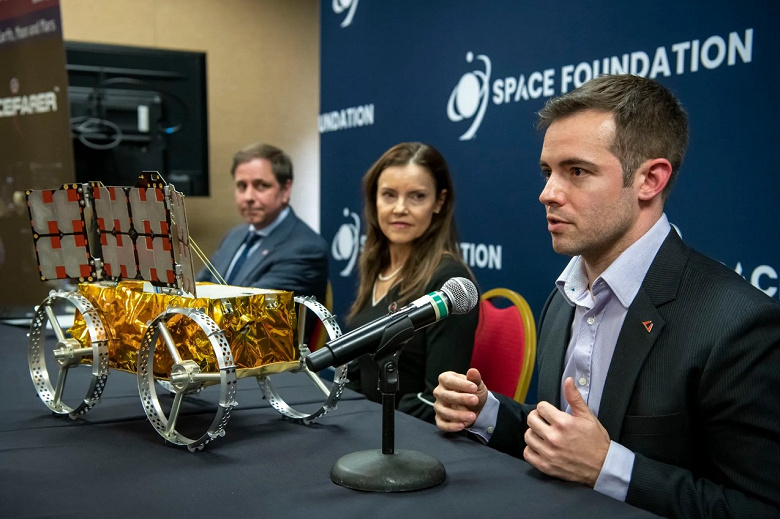Mission Control's Spacefarer software will allow Astrobotic's CubeRover to independently navigate the lunar surface and analyze lunar terrain
Astrobotic, a leading space robotics company, has announced a collaboration with Canadian space software company Mission Control to create a rover that will be sent to the Moon as part of Astrobotic's upcoming mission.
On April 8, the two companies announced they would use Mission Control's Spacefarer software to control Astrobotic's first CubeRover, scheduled to launch on Astrobotic's Griffin-1 lander later this year. The CubeRover will be one of several payloads on this lander, which will also carry NASA's VIPER rover.
The mission will test the shoebox-sized rover's maneuverability and communications capabilities. The mission will also demonstrate the ability of Spacefarer's software to control the rover, including semi-autonomous navigation and analysis of images captured on the ground.
«We decided to partner with Mission Control because of the extensive capabilities they have with Spacefarer, as well as the very simple interface they have created», &mdash ; said Mike Provenzano, vice president of advanced engineering programs at Astrobotic, at a press conference during the 39th Space Symposium.
According to Evan Reed, founder and CEO of Mission Control, Spacefarer — it is a cloud-based mission tool that provides easy access to telemetry and other data, as well as the ability to control the spacecraft through a user-friendly interface. It provides «all the tools users need to make informed decisions in no time».
The software will provide distributed control of the CubeRover, with mission operations taking place at both Astrobotic's headquarters in Pittsburgh and Mission Control's headquarters in Ottawa. «This will truly be a joint mission with operators in both locations», — Provenzano noted.
Mission Control previously launched a version of Spacefarer on another lunar mission, ispace's HAKUTO-R M1 lander, which crashed while attempting to land on the Moon in April 2023. Reed noted that the software could receive and analyze data from the lander, but could not control it.
He said Spacefarer on the CubeRover will help Mission Control open up new opportunities for its company by demonstrating that Spacefarer is capable of controlling spacecraft. According to him, clients will be able to focus on their technologies, «and they will not have to reinvent the wheel for the operating platform».
The development of the Spacefarer software was supported by the Canadian Space Agency (CSA) as part of the Lunar Exploration Acceleration Program (LEAP), which aims to help Canadian companies demonstrate their technologies for lunar missions. «CSA recognizes that without this step in development, without testing something that has already flown and performed real missions, we will have a very difficult time selling the technology around the world», — Reid said.

